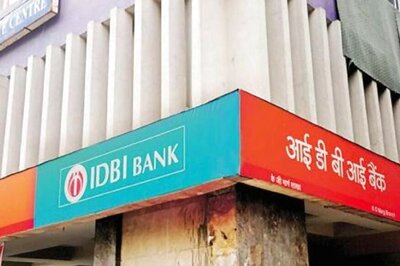
views
One of the most iconic images of Mamata Banerjee is from 1993 when she was forcibly dragged out of the Writers’ Building, the seat of the West Bengal government, by the police. There are several other occasions, which are still remembered as Mamata Banerjee’s ways of unprecedented agitations and facing alleged police atrocities.
Mamata Banerjee was a member of the Indian National Congress from 1975 to 1998 and during the 1990s she led multiple such protest rallies against chief minister Jyoti Basu’s Left Front government. She attempted to storm the Writers’ Building to meet CM Basu in 1993 while demanding justice for various issues, including alleged political violence perpetrated by the communist regime.
Picking Up Where Communists ‘Left’ Off?
The police intervention was forceful, and the image of Mamata being dragged away and out of the premises became symbolic of her struggle against the entrenched Left Front government. Her ways of leading long marches, gheraos of the Writers’ Building and Lal Bazar (Kolkata Police headquarters) and the siege of the state legislative assembly became representative of her political movements.
Nearly two decades later, Mamata Banerjee’s government is resorting to similar tactics she once protested against, almost mirroring the man and his methods she fought so hard to overthrow.
Methods, Madness, and Mastery: The Tactics of Mamata Banerjee
Her government’s methods, some madness in those methods, and the mastery to implement those methods — these are the few expressions that capture Mamata Banerjee’s relentless tactics to suppress dissent. On any given day of protest, the West Bengal police force — armed with dozens of senior officers in riot gear and in charge of specific zones, while the Rapid Action Force (RAF), specialised RoboCop units, and platoons of law enforcement—spares no effort to prepare for every eventuality.
Yet, on August 14, when a mob vandalised RG Kar Hospital, ransacking medicines and medical equipment worth crores, this formidable force was conspicuously absent.
The government also cancelled derby football matches, and shifted the semi-final of Durand Cup, fearing protests, and chaos following the rape and murder of a trainee doctor at the hospital. West Bengal police cited not enough security forces to handle such a huge match, the crowd and the agitation, that they were apprehensive of.
However, on August 27, the state witnessed an unparalleled defence structure put in place. As part of its methods and mastery over law-order handling situations, the state police have shown some exemplary ways.
From stationing water cannons at strategic points and erecting 7 to 10-foot barricades, some cemented to the streets, to deploying containers from Kidderpore dock for added defence, West Bengal police have demonstrated an extraordinary level of preparedness and control to keep the protesters at bay.
However, in the process of movement madness, several protesters were reportedly hurt during the lathi charge, while many police personnel were injured.
Even though many would argue about the cause and effects of such protests, some will agree that the protest politics, introduced to Bengal by the Left parties, was sharpened and elevated by none other than the current chief minister, Mamata Banerjee.



















Comments
0 comment